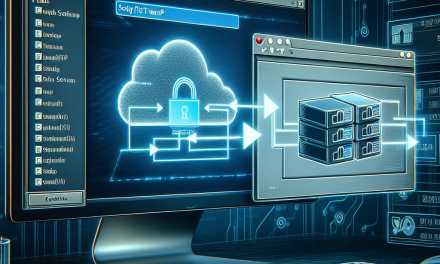In today’s digital landscape, maintaining the health, performance, and security of your IT infrastructure is paramount. Windows Server, being a widely-used platform for business applications and services, necessitates vigilant monitoring to ensure smooth operations. Effective activity monitoring can help identify potential issues before they become critical, enhance security, and optimize resource usage. Here are some best practices for Windows Server activity monitoring that can significantly boost your administration and management policies.
1. Define Monitoring Objectives
Before implementing any monitoring solution, it’s essential to define your objectives clearly. Are you looking to improve performance, ensure uptime, or enhance security? Setting specific goals will help you choose the right monitoring tools and metrics.
2. Use Comprehensive Monitoring Tools
Select tools that provide a holistic view of your Windows Server environment. Options like Microsoft’s System Center Operations Manager (SCOM), SolarWinds Server & Application Monitor, and Nagios allow for real-time performance monitoring, alerting, and analysis.
Key Features to Look For:
- Real-time Monitoring: Immediate visibility into server performance metrics.
- Custom Alerts: Notifications for critical issues based on your defined thresholds.
- Reporting: Scheduled and ad-hoc reports on server performance and health.
3. Monitor Performance Metrics
Regularly track and analyze key performance metrics, such as:
- CPU Utilization: High CPU usage may indicate processes that are consuming too many resources or a server under stress.
- Memory Usage: Monitor memory consumption to prevent swapping and improve server responsiveness.
- Disk Activity: Check for high reads/writes and latency issues that could lead to performance degradation.
- Network Utilization: Track traffic patterns to identify bottlenecks or unusual spikes that may indicate security threats.
4. Implement Security Monitoring
Security should be a major focus when monitoring your servers. Monitoring logs and user activities can help detect unauthorized access, data breaches, and internal threats.
Key Security Practices:
- Audit policy settings: Enable auditing for important events related to logon, account issues, and object access.
- Log Analysis: Regularly review the Security Event Log, Application Log, and System Log for anomalies.
- Integrate SIEM solutions: Solutions like Splunk or Microsoft Sentinel can help aggregate logs and alerts for deeper analysis of security incidents.
5. Regularly Review Logs
Windows Server logs (Event Viewer) provide crucial insights into system behavior and error events. Regularly review these logs to spot trends, recurring issues, and areas for optimization.
Tips for Log Management:
- Automate Log Collection: Use log management tools to aggregate and manage logs efficiently.
- Log Retention: Define retention policies in compliance with your organization’s regulations and data management standards.
6. Enable Remote Monitoring
For organizations with geographically dispersed servers, consider implementing remote monitoring solutions. This can simplify performance management and ensure prompt reactions to issues regardless of where IT staff are located.
7. Perform Regular Health Checks
Conduct routine checks of the server health, including:
- Disk Integrity Checks: Scheduled SMART tests and checks for file system integrity.
- System Updates: Ensure that your server is running the latest patches and updates to avoid vulnerabilities.
- Hardware Monitoring: Ensure that essential hardware components (e.g., RAID, power supply) are functioning optimally.
8. Train Staff and Document Procedures
Ensure that your IT staff is trained on monitoring tools, methodologies, and best practices. Additionally, maintain comprehensive documentation of procedures, monitoring configurations, and escalation protocols.
9. Establish an Incident Response Plan
Even with the best monitoring practices, issues can arise unexpectedly. An incident response plan is crucial to quickly address any incidents:
- Define Roles: Assign roles and responsibilities for various team members in the case of an incident.
- Response Procedures: Document step-by-step procedures for addressing different types of incidents.
- Post-Incident Reviews: Conduct reviews to analyze how incidents were handled and identify improvements.
10. Regularly Review Metrics and Adjust Monitoring Strategies
The technology landscape is constantly changing, and so are the demands on your server environment. Regularly review your monitoring metrics and adjust your strategy as needed to stay aligned with business objectives and technological advancements.
Conclusion
Implementing these best practices for Windows Server activity monitoring can enhance the reliability, performance, and security of your servers. A proactive approach to monitoring not only mitigates risks but also provides valuable insights into system management, enabling your organization to operate efficiently and effectively. At WafaTech, we believe that staying ahead of potential issues through diligent monitoring is essential for any business striving for success in the competitive digital climate.




